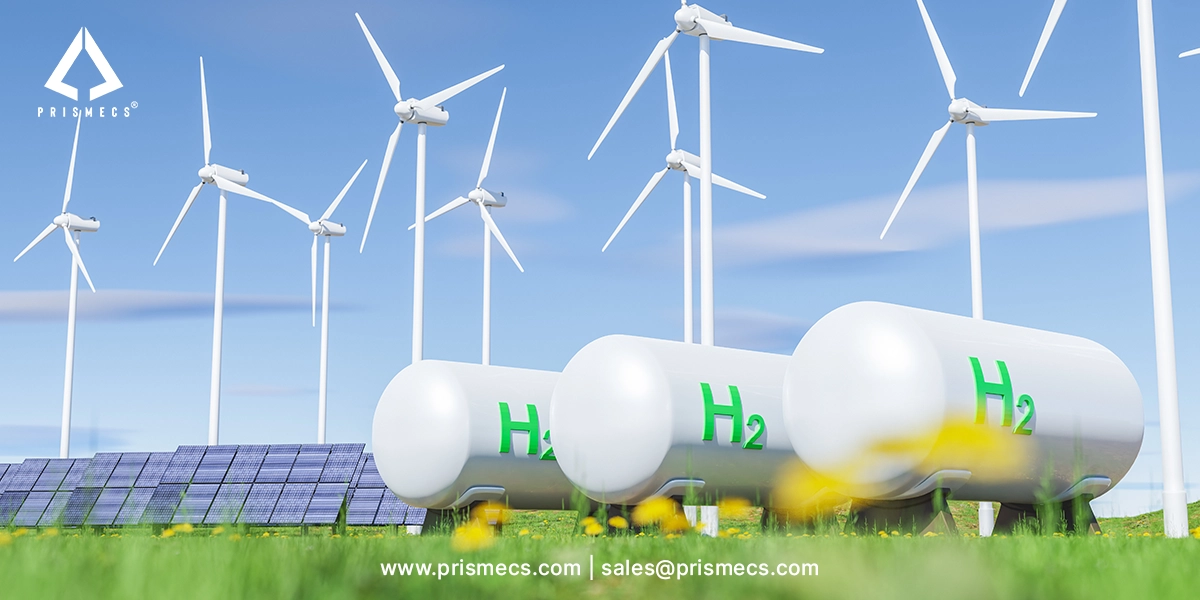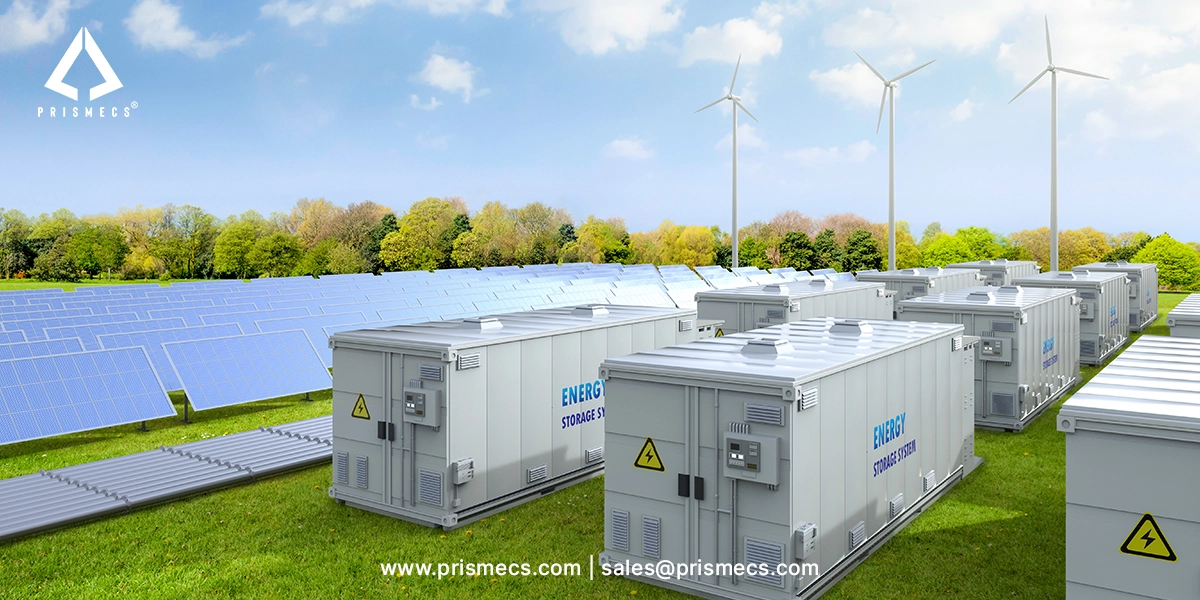
The world’s shift to green energy has sparked debate over green hydrogen and conventional sources. This debate is growing, especially in power generation. Conventional sources, like fossil fuels and nuclear power, have dominated for decades.
In contrast, green hydrogen offers a cleaner energy solution. This new fuel reduces carbon emissions and boosts environmental sustainability.
This blog explores green hydrogen’s benefits, drawbacks, and future implications. It compares green hydrogen to traditional energy sources. We focus on carbon footprint, energy efficiency, and industrial applicability.
Understanding Green Hydrogen and Traditional Energy Sources
Green hydrogen is a type of clean energy. Renewable electricity produces it by splitting water. This process, called electrolysis, separates water into hydrogen and oxygen. Hydrogen production releases no carbon dioxide emissions. Conventional methods, however, rely on natural gas or coal.
Green hydrogen production has increased substantially. It can help decarbonize sectors like transportation, heavy industry, and power generation. This production significantly impacts the energy transition era. Industries are now shifting toward greenhouse gas reduction targets.
Carbon Emissions and Environmental Impact
One of the most vital contrasts between green hydrogen and conventional energy sources is their environmental impact.
Clean Energy
Its main advantage is its zero-carbon output both in manufacturing and consumption. Hydrogen generated through electrolysis discharges only water in fuel cells. It releases only water in combustion processes as well.
Therefore, it serves as a highly recommended insulator. Renewable energies supply it through an emissions-free process. This process aligns perfectly with global carbon neutrality targets.
In contrast, gray hydrogen sources exclusively from natural gas. Gray hydrogen produces carbon dioxide as a byproduct. Unlike car emissions, it is an alternative that is in consonance with international carbon neutrality goals.
Traditional Energy Sources and Carbon Emissions
Fossil fuels release large volumes of carbon dioxide during combustion. This process warms the earth and makes it hotter. A coal-fired power plant emits high carbon dioxide levels per energy unit. It emits more than practically any other energy source. Natural gas is slightly cleaner than coal. However, it still contributes to greenhouse gas emissions.
On the other hand, nuclear energy is one characterized by the absence of carbon dioxide in electricity production. The main drawback is that the mining process, the enrichment process, and the waste disposition are causing environmental hazards.
The Role of Carbon Capture
For fossil fuels to be reusable in a carbon-free future, carbon capture technology is necessary. Carbon dioxide capture at emission sources may let industries continue using fossil fuels.
This approach reduces environmental impact. However, technology is still in development. It remains expensive and less efficient. Carbon capture technology lacks an inherently clean manufacturing process.
Energy Efficiency and Storage Potential
Energy efficiency is crucial for power supply reliability. Storage capacity also supports reliable power supply. Both factors are essential for grid stability. They ensure energy supply meets peak demand.
Storage Benefit
The possibility of energy storage is one of the best things. People can store hydrogen in large quantities. It provides energy when wind and solar are unavailable.
This approach creates a stable and reliable energy grid. Hydrogen acts as a buffer for renewable energy intermittently. It addresses the reliability issues of renewable electricity sources.
Traditional Sources and Immediate Energy Supply
Traditional power sources like fossil fuels and nuclear can provide you with the reliable energy that you need. Operators can ramp up coal and natural gas plants relatively quickly to meet electricity demand.
Nuclear power plants are less agile in boosting reaction rates. However, they stabilize power distribution significantly. The reason that their operation is continuous, this makes them the best power source for the base load requirements.
These sources are dependable but lack the storage capacity this technology offers. This storage capacity can help them operate more efficiently. As a result, the future energy system will be more flexible. It will also grow stronger.
Cost and Production Scalability
The cost of power is a major aspect. It affects all sources of energy. This cost influences economic soundness. Economic soundness impacts the broader acceptance of energy sources.
Challenges in Scaling Production
Producing it is still rather expensive because of high production costs and the necessity for renewable electricity. At this moment, electrolysis is the most expensive among the methods of producing grey hydrogen.
The technology for shipping, storing, and using it is in its early stage. It requires significant investment. Costs are expected to decrease as renewable electricity prices fall.
Technology will advance, reducing costs further. This will make it a viable alternative to traditional energy sources in the long term.
Cost Competitiveness of Traditional Energy Sources
Fossil fuels benefit from existing infrastructure and economies of scale. This gives them an edge. In some cases, they are cheaper. However, carbon taxes and regulations are making them more expensive.
Nuclear energy is expensive to set up. Safety and regulatory requirements are very strict. Still, it remains cost-effective. Nuclear plants have low fuel costs and high energy output.
Green Hydrogen Market Size
Experts predict the market will grow to USD 10.55 billion by 2030, with a strong annual rate of 57.41% from 2024 to 2030. Increasing demand for renewable energy sources and the imperative to curb carbon emissions primarily drive this growth.
Analysts project the market will increase from USD 0.44 billion in 2022 to USD 10.55 billion by 2030.
Industrial Applications and Sector-Specific Relevance
The interaction of power sources and industry sectors varies. Energy sources have different levels of applicability. Sustainability targets and energy demands are crucial considerations. Their utility should align with these factors.
Heavy Industry
Hydrogen is beneficial for decarbonizing heavy industries like steel, cement, and chemicals. These industries traditionally use deep-rooted energy sources. Hydrogen can replace coal and natural gas in these processes. Industries could reduce carbon emissions without losing performance.
Companies already use hydrogen fuel cells for trucks and buses. These are heavy-duty categories of the transport sector. Battery-electric technologies may not work due to weight and range limits. Hydrogen offers a further extension in these cases.
Traditional Sources and Their Industrial Relevance
Fossil fuels remain vital for high-energy-density sectors like aviation and shipping. Developers have not yet created any comparable technologies.
Nuclear power suits high-power applications. It works well in regions or sectors where renewables are scarce. Stable and utilizes small amounts of fuel to produce a lot of energy.
Relevant: Driving Efficiency in Green Hydrogen Power Solutions
The Future: Can Green Hydrogen Replace Traditional Energy Sources?
The biggest possibility as a clean energy source is its contribution to green energy policy. However, there are a few problems to solve. We must address the high production cost.
Limited infrastructure also needs improvement. We need to simplify complex retrieval processes. We must overcome these challenges for efficiency in power generation.
Nevertheless, technology-driven energy causes price drops and increases efficiency daily. It will become a key player in the energy mix. Governments are pursuing drastic carbon emission reduction targets.
A Hybrid Energy Future
All sectors have a variety of energy needs. The power approaches used will vary. Renewable and conventional energy sources will integrate more. Electricity generation will shift towards green and renewable resources.
This shift will benefit areas with abundant renewable energy production. Conventional power sources may dominate energy-intensive industries. Carbon mitigation methods, like carbon capture and storage, will drive change. The sector will soon transition to green technology.
The Evolving Landscape of Power Generation
It draws attention for being clean and sustainable. It may help reduce climate change and meet energy demands. Traditional sources are reliable and inexpensive. However, they face growing environmental and regulatory pressures.
This makes reliance on them more complicated. In the future, renewable hydrogen, fossil fuels with carbon capture, and nuclear energy will lead the way. The power generation industry will scramble for a better future.
Each energy source will have a specific role. These sources will integrate into a diversified energy portfolio. The portfolio will provide stable and continuous power worldwide.
Final Thoughts
The replacement of traditional energy sources with green hydrogen is not a complete shift but rather a transitional evolution. The energy sector can continue to provide necessary energy for the world.
It can also transition to low carbon. Concepts related to both energy sources will drive this change. As clean energy production increases, costs will decrease. This will make clean energy more affordable.
It will also create an environmentally friendly ecosystem. The world of power generation will benefit from this transition.
How Prismecs can help by integrating Green Hydrogen as a renewable energy source?
It can play a significant role in the transition to a low-carbon economy and achieving net-zero emissions. The global pursuit of combating climate change focuses on innovative solutions. Green Hydrogen stands out as a promising renewable energy source.
Contact Prismecs as your trusted partner. You can harness the potential of Green Hydrogen. Together, you can forge a more sustainable future. To avail of our services, you can call us at +1 (888) 774-7632 or send us an email at sales@prismecs.com.
Tags: Green Hydrogen Traditional Energy Sources Green Hydrogen Production Hydrogen And Oxygen Natural Gas Renewable Electricity Producing Green Hydrogen Power Generation Grey Hydrogen Hydrogen Produced Renewable Source Nuclear Power Plants
recent posts

Green Hydrogen
6 minutes read
Green Hydrogen Plant Technology Guide
Discover how a green hydrogen plant works, its key technologies, and its role in clean energy. Explore solutions for scalable, carbon-free hydrogen pr...

EPC Services
7 minutes read
EPC Power: From Design to Delivery of Reliable Energy System
Discover how EPC power solutions streamline design to delivery, ensuring reliable, efficient, and future-ready energy systems in one integrated proces...

Data Centers
12 minutes read
Powered Shell Data Centers | Benefits, Design & Adoption
Discover the benefits, design, and adoption of powered shell data centers. Learn how they boost speed to market, scalability, and energy efficiency.

Distributed Energy Services
9 minutes read
Smart Grid and Distributed Energy Resources
Discover how smart grids and distributed energy resources (DER) work together to create efficient, resilient, and sustainable energy systems for the f...